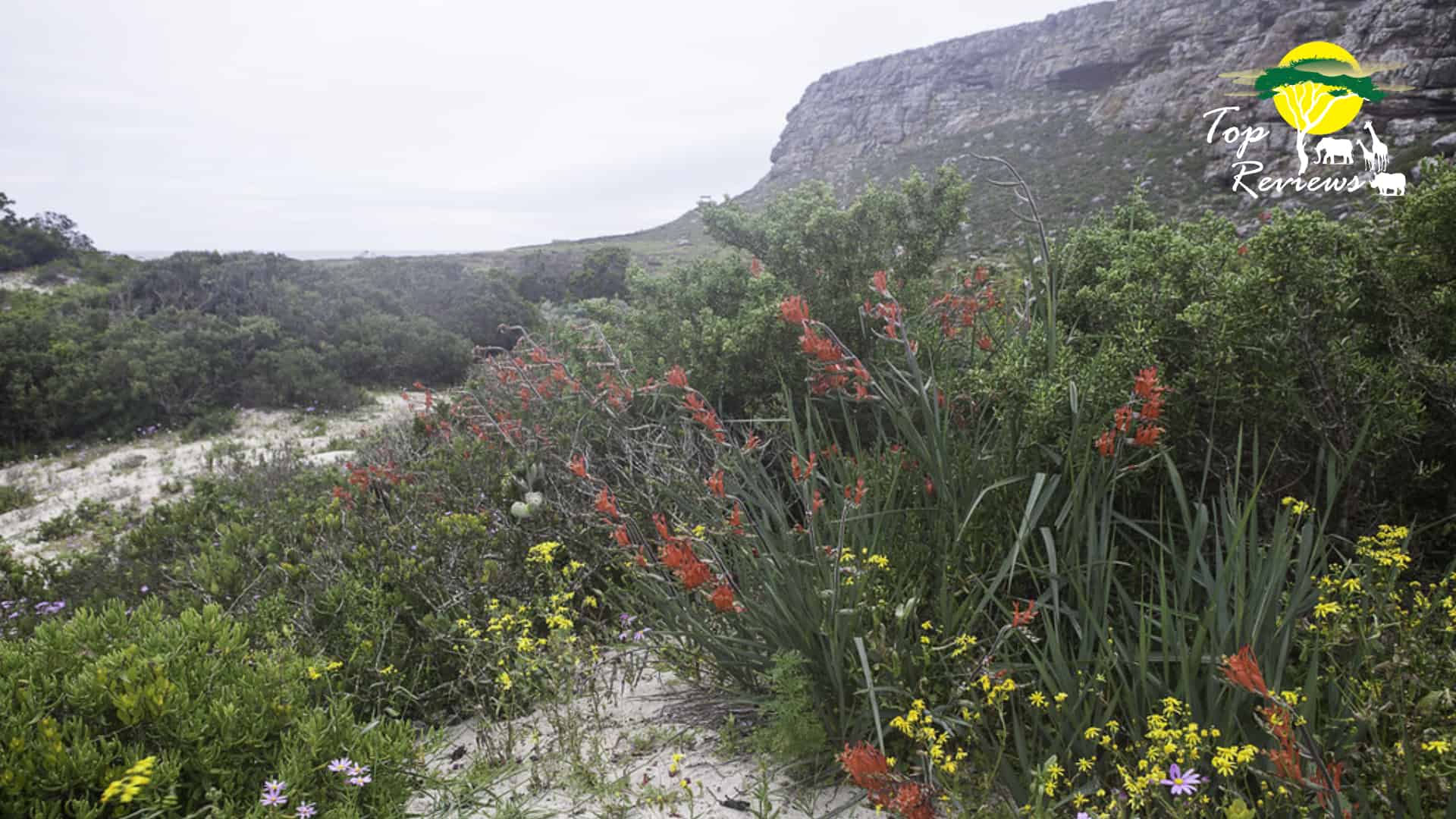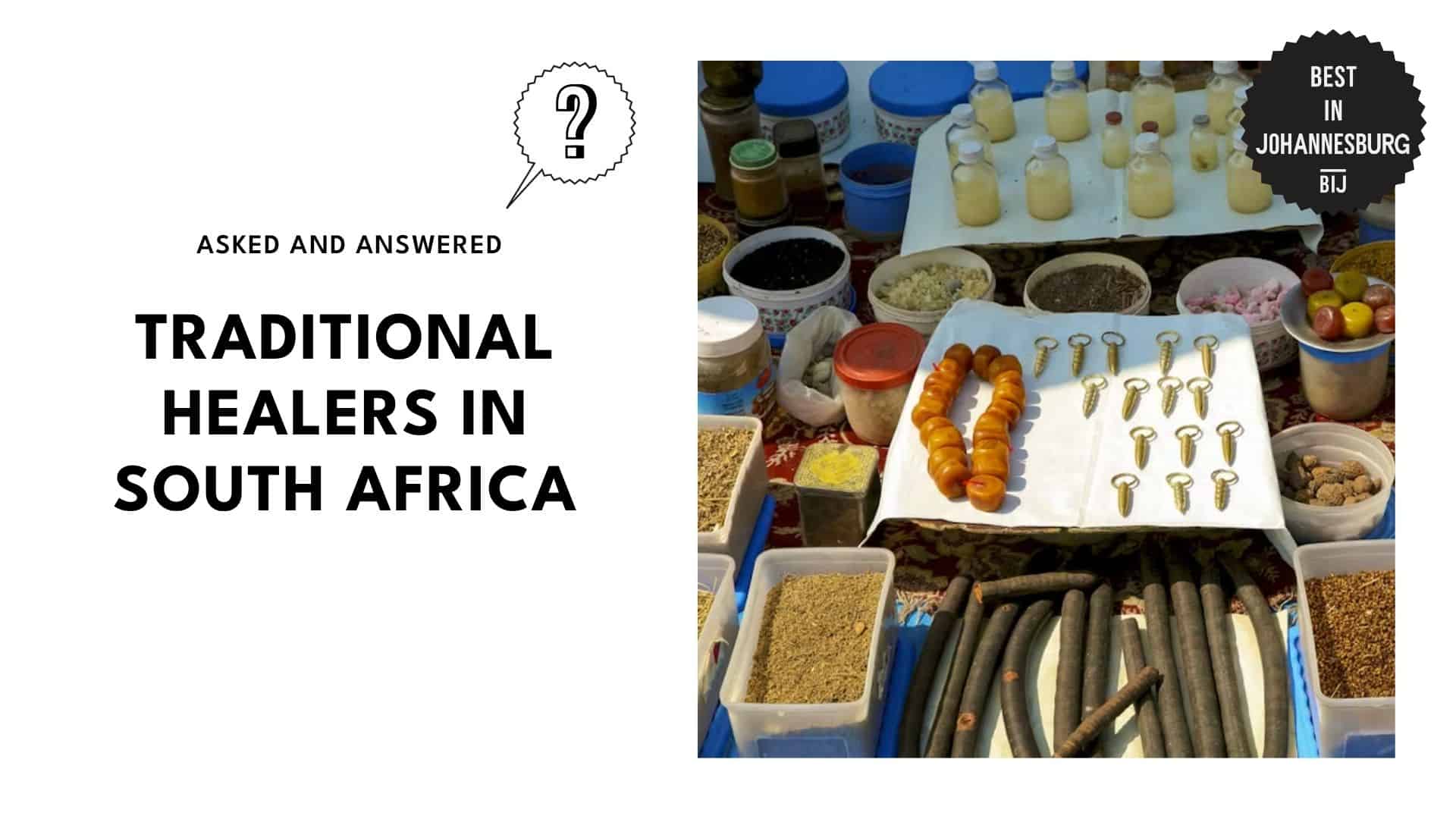Categories > Guides and Tips

20 Indigenous South African Plants
- What plants are only found in South Africa?
- Snake Flower
- Cape Cowslip
- Wild Malva
- Kudu Lily
- Confetti Bush
- Peppermint Pelargonium
- African Wood-Sorrel
- Big Num-Num
- White Paint Brush
- Society Garlic
- Puzzle Bush
- Sour Figs
- River Bells
- Sand Sage
- Doll’s Protea
- Orange Poppy
- Garlic Buchu
- Wild Rosemary
- Balderjan
- Starry Wild Jasmine
South Africa’s a treasure trove for the world’s best flora. In fact, we have around 20,000 plant species, 70% of which are found only here and nowhere else on Earth!
With that said, we’re giving you a glimpse of our country’s best indigenous plants that we can grow easily in our backyards. Here are our top picks!
What plants are only found in South Africa?
1. Snake Flower

| Scientific name | Bulbine frutescens |
| Where you’ll see it | Northern Cape, Western Cape and Eastern Cape |
| Main use | Medicinal |
The snake flower can survive different kinds of environments with their resilient nature.
They are fast-growing and branched succulents with linear green leaves and yellow – sometimes, orange even – petals. While its fruit is a small, rounded capsule with black seeds inside.
But the star of the occasion is their fresh leaves. Its jelly-like juice is perfect for medicinal purposes – particularly treating burns, rashes, blisters and insect bites among others.
2. Cape Cowslip

| Scientific name | Lachenalia hybrids |
| Where you’ll see it | Northern Cape, Western Cape and Eastern Cape |
| Main use | Ornamental |
Cape cowslips are small bulbous plants that look like hyacinths with their bell-shaped blooms and thick clusters of flowers.
In winter, they produce strap-shaped and bright green leaves with a few deep purple dots. During the summer, a spike of tubular and bell-shaped flowers grows from the centre of the bulb of the plant.
Its colours range from bright yellow to dark mauve, making them great ornamental pieces.
Fair warning though, its ample amounts of pollen attract lots of pollinating insects, particularly bees, so just be a bit more careful.
3. Wild Malva

| Scientific name | Pelargonium cucullatum |
| Where you’ll see it | Saldanha and Baardskeerdersbos |
| Main use | Medicinal |
Known as a tough shrub, wild malva flowers grow in different parts of South Africa, particularly in the Cape Coast. They can grow up to two metres tall, depending on how well you take care of them.
Their flowers have a purple to pinkish colour with a faint smell. However, they usually only appear during the summer.
In fact, they grow best with lots of sunlight – preferably at least six hours of sun exposure daily – along with well-drained soil.
But more than a pretty set of decorations, these wild malva flowers can be used for medicinal reasons. Its leaves can be diffused into a hot tea to treat stomachaches.
Also, its bruised leaves can be used as a poultice for any sores and wounds. In fact, we can roll up a fresh leaf and insert it in the ear to ease any earaches!
4. Kudu Lily

| Scientific name | Pachypodium saundersiae |
| Where you’ll see it | Limpopo, Mpumalanga and KwaZulu-Natal |
| Main use | Ornamental |
Kudu Lily or koedoe lelie in Afrikaans is a semi-hardy and deciduous succulent shrub with a large and irregularly shaped stem. It has thick branches and a greyish bark with hard white spines.
From April to June, it produces large and attractive white flowers with reddish-purple hues. It produces a grey, two-lobed pod that looks like horns.
This plant is perfect for decoration in our homes, particularly in gravel or arid gardens, because of its eye-catching appearance.
Pro Tip: Water them sparingly in a sunlit position so they can grow up to one metre tall.
5. Confetti Bush
| Scientific name | Coleonema pulchellum |
| Where you’ll see it | Western Cape and Eastern Cape |
| Main use | Culinary |
The Confetti Bush is one of our most popular garden plants in the country, mainly because it’s easy on the eyes.
This compact and round shrub has light green leaves with white to pink – depending on the season – star-shaped petals. Meanwhile, its fruit has a capsule that contains small seeds.
But the best thing about this herb is it’s ideal for culinary purposes. Not only can it neutralise odours but it can also add a little sweetness to any dish.
ICYDK: They are best grown in well-drained and sandy soils with lots of sunlight daily.
6. Peppermint Pelargonium

| Scientific name | Pelargonium tomentosum |
| Where you’ll see it | Eastern Cape and Western Cape |
| Main use | Culinary |
Known for its fragrant smell, it’s always a great idea to grow peppermint pelargoniums at our homes. They have large and green rounded leaves that are covered with fine short hairs.
It even has tiny white flowers with two upper petals with touch of purple markings, making them look lovely as indoor decor.
But it’s also a great addition to our natural ingredients at home. Its leaves can be simmered in milk and then strained.
It’s a worthy choice for either baking or making teas too!
Plus, we can use the dainty flowers as decoration for our salads or cakes – either way, everyone is bound to sing praises about it!
Beware, though: this plant is toxic to dogs, cats and horses. Do keep them away from pets as much as possible.
7. African Wood-Sorrel

| Scientific name | Oxalis pes-caprae |
| Where you’ll see it | Northern Cape, Western Cape and Eastern Cape |
| Main use | Culinary |
The African wood-sorrel is a short and perennial herb that originated in the Cape region. It easily stands out from the rest because of its uniquely bright yellow cup-shaped flowers.
But its appearance isn’t the only great thing about it. Believe it or not, the whole plant is edible!
It boasts a sharp taste, adding a little zing to your mouth after one bite.
Also, its stalks and roots can either be eaten raw or cooked in milk. We can even place these lovely flowers on top of our salads to make them look more appetising.
8. Big Num-Num

| Scientific name | Carissa macrocarpa |
| Where you’ll see it | Eastern Cape |
| Main use | Culinary |
Although it’s commonly called the Natal Plum in other countries, it’s locally referred to as the big num-num here in the country. It has dense green leaves, aromatic white flowers and large red fruits.
These vibrant berries can be eaten as is which we highly recommend because it’s high in vitamin C and pectin. These help reduce the effects of aging and boosts our immune system.
We can even use the fruit to make delicious jams and preserves while we’re at it! With their bright red hue, they’re also great for creating syrups and cordials.
Since this plant is drought-resistant, we can plant it anywhere without having to worry about having the best soil condition. Its flowers usually bloom in spring and summer, along with its tasty fruit.
9. White Paint Brush
| Scientific name | Haemanthus albiflos |
| Where you’ll see it | KwaZulu-Natal, Eastern Cape and Western Cape |
| Main use | Ornamental |
The white paintbrush plant got its name from the fact that its head flower looks like an actual paintbrush – no, we’re not kidding! It has a green calyx surrounding thin and white flowers with a yellow tip.
Plus, it has orange-red berries that birds love to eat. Its pollen often attracts bees and butterflies, especially if the plant’s grown in an outdoor garden.
But we can still grow this inside a pot and place it indoors. It’ll look great as a form of decoration for our space, making it appear cosier.
Contrary to most indigenous plants, this plant loves the shade and thrives in dark areas so we won’t have to worry about putting it in a sunlit position for them to grow well.
10. Society Garlic

| Scientific name | Tulbachia violacea |
| Where you’ll see it | Eastern Cape, Limpopo and KwaZulu-Natal |
| Main use | Culinary |
The society garlic is a tender perennial plant that usually grows in grassland areas here in South Africa. Notably, it looks like garlic chives with its tuberous rootstock and grey-green leaves.
We can even use its pinkish-to-purplish flowers on our salad either as an ingredient or garnish, whichever we’re in the mood for. At the same time, its roots can be used like regular garlic because of its pungent flavour.
They’re a perfect addition to our stews and roasts at home, too. The leaves of the plant can even be steeped in hot water as a treatment for coughs and colds.
11. Puzzle Bush

| Scientific name | Ehretia rigida |
| Where you’ll see it | Limpopo, Gauteng, Mpumalanga, KwaZulu-Natal and Free State |
| Main use | Medicinal |
The puzzle bush is a mystery in itself; with the shrub forming a downward tangle with connecting branches, making it distinct from other plant species.
Its white flowers, which usually bloom between the months of July to Novembe, are known for their sweet smell. This plant also bears orange berries, which are well-loved by birds.
Since this is a strong yet flexible plant, it was often used by hunters for making their bows and baskets in the past. In fact, they even made charms out of it to protect their huts from predators and safeguard their crops from hail.
Today, this plant is used medicinally. Its powdered roots can treat small cuts on the skin.
We can even place them over our abdomen and chest to relieve any pain.
12. Sour Figs

| Scientific name | Carpobrotus edulis |
| Where you’ll see it | Northern Cape, Western Cape and Eastern Cape |
| Main use | Medicinal |
Usually found in coastal and inland slopes, the carpobrotus edulis – or locally known as sour figs – are mat-forming succulents that rapidly grow from August to October.
It has horizontal stems, curving upwards as they grow with big flowers with bright hues ranging from yellow to pink.
Its succulent leaves are great for treating skin issues like sunburn, rashes and insect bites. We can even chew on these to relieve a sore throat.
What’s more, their fruits have a tamarind-like taste which is perfect for making jams, chutneys and sauces.
13. River Bells

| Scientific name | Mackaya bella |
| Where you’ll see it | Eastern Cape, KwaZulu-Natal, Mpumalanga and Limpopo |
| Main use | Ornamental |
This evergreen shrub has dark green and glossy leaves with white and trumpet-shaped flowers. It’s typically found around the edges of streams
They usually grow around spring to early summer – from August to December – in deep shade locations. Its flowers are so vibrant that they appear to glow even in the dark – yup, we’re not making this up!
If you take a closer look at their flowers, it has streaks of purple on them, making them appear more eccentric. That’s why this plant is perfect as an ornament at home with its distinct look.
14. Sand Sage

| Scientific name | Salvia africana lutea |
| Where you’ll see it | Western Cape, Eastern Cape and Northern Cape |
| Main use | Culinary |
Growing between the months of June to December, sand sage is a hardy and evergreen shrub with fragrant grey leaves. It has an unusual shape with its unique reddish flowers covered by large bracts.
Usually, we use this delicious herb for cooking since it blends well with vegetable and pasta dishes. Although it’s slightly bitter at first, we promise it’s worth a bite!
We also dry the leaves and store them in a glass jar, keeping them in our spice cupboard for whenever the need arises.
Or we can use the flowers as a garnish for our salads, making them look better than ever.
Bonus: we also turn sand sage into tea for treating coughs, colds and stomach aches.
15. Doll’s Protea

| Scientific name | Macledium zeyheri |
| Where you’ll see it | Limpopo, North West, Gauteng, Mpumalanga and KwaZulu-Natal |
| Main use | Medicinal |
Another strange yet alluring plant only found in the country is Doll’s Protea. It’s a hardy and perennial plant with leathery leaves and with cobweb-like stems.
Its flowers have a purplish colour with spiky silver bracts, blooming usually from January to May. This can be planted in containers or gardens with rich soil.
Traditionally, these plants are used for treating chest ailments. It’s so safe for human consumption that mothers can take it after a long and difficult labour as a blood strengthener!
16. Orange Poppy

| Scientific name | Papaver aculeatum |
| Where you’ll see it | Limpopo, Gauteng, Mpumalanga, KwaZulu-Natal, Free State, Northern Cape, Eastern Cape and Western Cape |
| Main use | Ornamental |
Papaver aculeatum – or orange poppy as we like to call it – is a hardy and evergreen annual to perennial plant that’s known for its papery blooms on long stems with small sharp spikes.
Its flowers usually grow from early spring to late summer along with its grey-green leaves. These are best planted in well-drained soil for optimal results.
Pollinators, particularly bees, love this plant because of the ample amount of pollen in its flowers.
As for us, we usually like to use the leaves of the young plant as an herb for cooking, adding a little flavour to our dishes. But take note though, that the mature plants are toxic and should be avoided at all costs.
To be safe, you can just use these plants as decor at home with their vibrant colours that are soothing to the eyes whenever you look at them.
17. Garlic Buchu

| Scientific name | Agathosma apiculata |
| Where you’ll see it | Riversdale and Bredasdorp |
| Main use | Culinary |
The garlic buchu, agathosma apiculata, is a densely leafy shrub that’s only found in the country, particularly in the towns of Riversdale and Bredasdorp. Its growth starts from a single stem at its base until it becomes a bushy and upright shrub.
Its younger stems have a light brown colour but they turn darker as they mature. But the most noteworthy thing about it is its strong garlic scent – hence, its name.
This is perfect for adding that extra flavour to our dishes, making it a great cooking and baking companion.
18. Wild Rosemary

| Scientific name | Eriocephalus africanus |
| Where you’ll see it | Western Cape, Eastern Cape and Namaqualand |
| Main use | Medicinal |
If you’re planning to make a dry garden, the wild rosemary (eriocephalus africanus) would make a great addition. These evergreen shrubs are popular all over our country as they grow best in hot temperatures.
They are known for their thin and grey leaves which oddly smell like Vicks when crushed. That’s why it can be used as a form of medicine for different respiratory ailments like coughs and colds.
We can even put a little bit of it on our tea for an additional soothing effect.
19. Balderjan

| Scientific name | Mentha longifolia |
| Where you’ll see it | Eastern Cape, Lesotho, Free State, KwaZulu-Natal, Gauteng and Limpopo |
| Main use | Medicinal |
Popular for its strong peppermint scent, the balderjan is widely distributed in the country from Eastern Cape to Limpopo. It’s a fast-growing and perennial herb that can reach up to 1.5 metres high.
We usually use them as a form of medicine by making a tea out of them to treat stomach disorders because of their soothing effect. But it can also be used to add flavour to pastries and jams.
20. Starry Wild Jasmine

| Scientific name | Jasminum multipartitum |
| Where you’ll see it | Limpopo, Mpumalanga, KwaZulu-Natal and Eastern Cape |
| Main use | Culinary |
As its name suggests, the starry wild jasmine plant has a white star-shaped flower that makes for a pretty sight. We love its fragrant smell, which we liken to an expensive brand of perfume.
Although they can be turned into pretty decorations at home, we commonly use the flowers as a garnish in salads. They are even great for baking and making tea as it adds a little flavour to them!
Pro Tip: Use them while they are still fresh since the flowers tend to discolour quickly once plucked.





